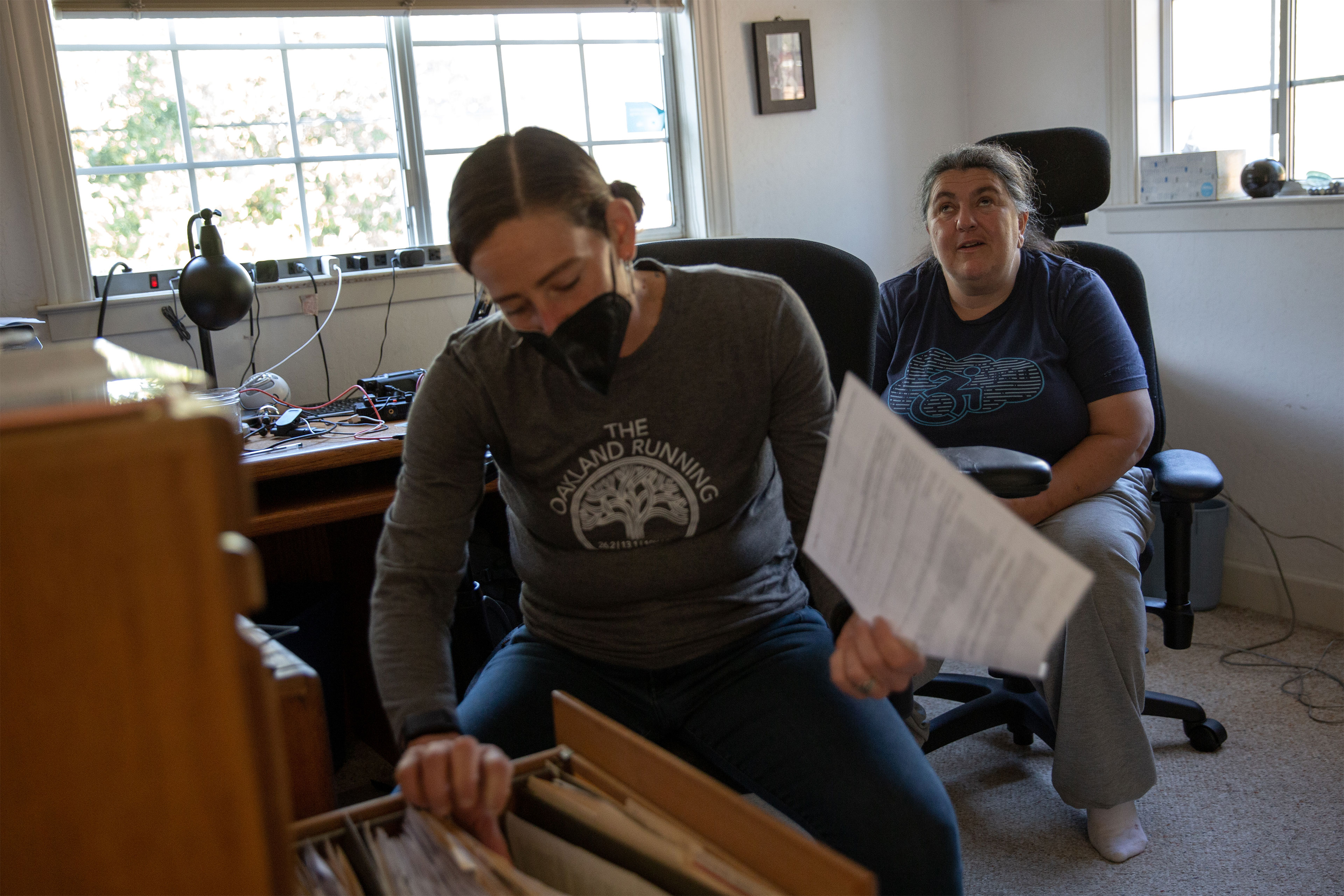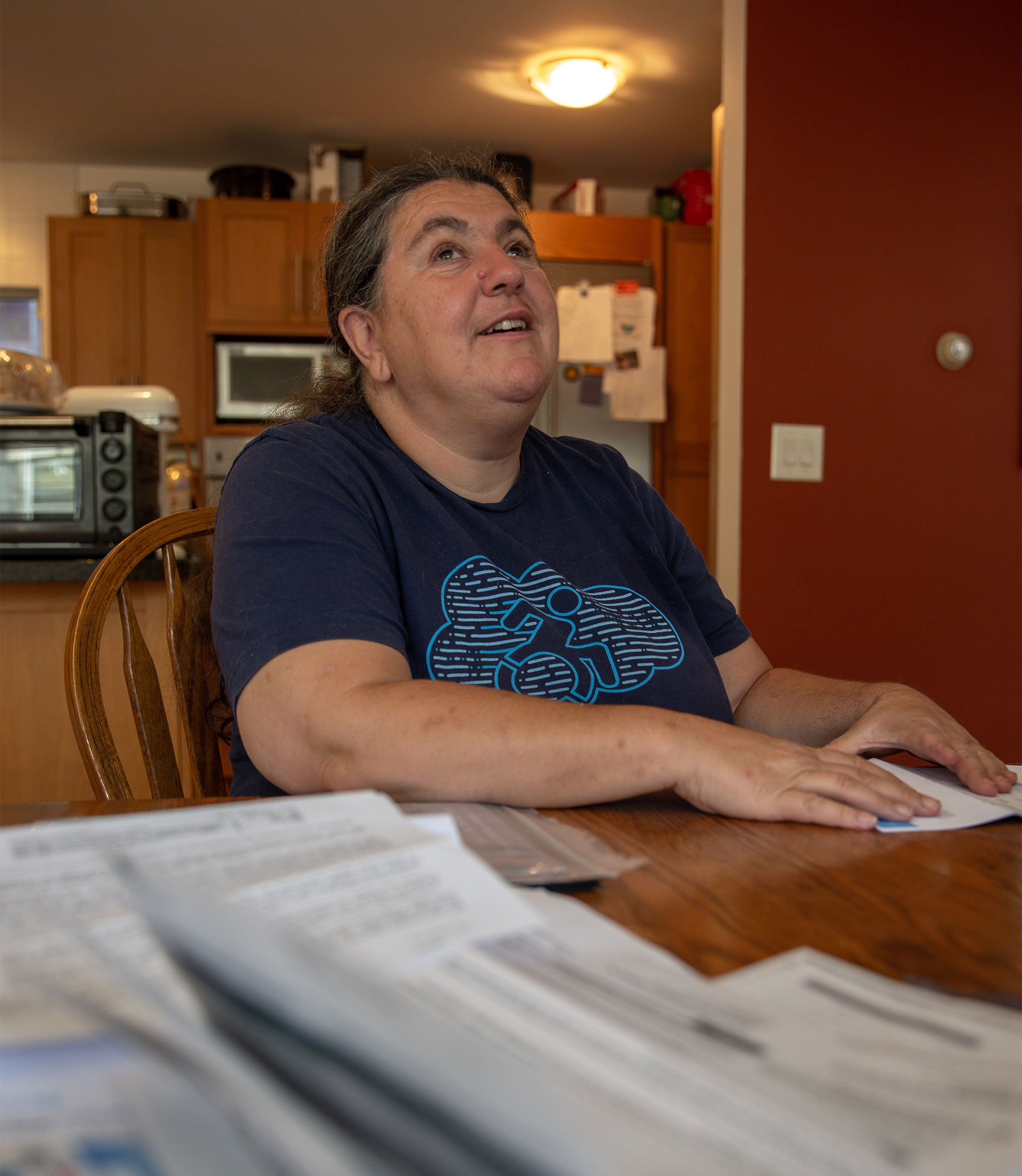A Missouri man who is deaf and blind said a medical bill he didn’t know existed was sent to debt collections, triggering an 11% rise in his home insurance premiums.
An insurer has suspended a blind woman’s coverage every year since 2010 after mailing printed “verification of benefits” forms to her California home that she cannot read, she said. The issues continued even after she got a lawyer involved.
And another insurer kept sending a visually impaired Indiana woman bills she said she could not read, even after her complaint to the Health and Human Services’ Office for Civil Rights led to corrective actions.
Health insurers and health care systems across the U.S. are breaking disability rights laws by sending inaccessible medical bills and notices, a KHN investigation found. The practice hinders the ability of blind Americans to know what they owe, effectively creating a disability tax on their time and finances.
More than 7 million Americans 16 and older have a visual disability, according to the National Federation of the Blind. Medical information and bills delivered in an accessible manner is a right protected under various statutes, including the Americans with Disabilities Act, the Affordable Care Act, and the Rehabilitation Act, disability rights legal experts said.
But blind patients told KHN that the letters they receive can be impossible to read if they are not in large print, depending on their level of vision impairment. Some websites have coding incompatible with screen reader technology, which reads text aloud. Some health care systems and insurers fail to mail documents in Braille, which some blind people read by touch.
“I tell them sending me small-print mail is like hiring a mime to communicate to me from outside my window,” Stuart Salvador said over Skype instant messaging. The 37-year-old lives in Greene County, Missouri, and has only residual sight and hearing after a case of shingles when he was 28. “I can tell something is there, but I have no idea what I’m supposed to be getting from that.”
Salvador said it can take up to six hours for him to effectively convert a printed medical bill into Braille. He said he has been sent to collections multiple times by CoxHealth and Mercy hospital systems through their automatic medical debt referral systems after they sent him bills he could not read. As a result, he said, his home insurance carrier raised his annual premium by 11%, costing him an additional $133.51 and hassle.
Nancy Dixon, a spokesperson for Mercy, said that the health system could not find a bill for Salvador that was sent to collections in its records within the past 10 years, and that its policy is to make reasonable accommodations for any patient who requests them. CoxHealth did not respond to requests for comment.
Salvador noted that it’s challenging for him and other visually impaired patients to fight for access to their billing information. If they realize a problem exists, he and other patients told KHN, communicating with the medical systems and insurers can be difficult. But often they may not be aware of the problem until it’s too late. Like Salvador in this instance, some blind patients don’t keep track of written documentation they cannot see, which otherwise might help with a possible legal challenge when overdue billing issues escalate.
Disability rights attorney Albert Elia, who is blind, said blind people stuck with inaccessible bills often are left with two options: to hope for government action or pursue long, costly lawsuits. The National Federation of the Blind and the American Council of the Blind have sued and won public settlements regarding inaccessible medical information.
Meredith Weaver, a senior staff attorney for Disability Rights Advocates, who helped monitor the implementation of a blind accessibility settlement agreement with health care giant Kaiser Permanente, said her clients often ask for documents to be sent in Braille or be readable by online screen readers. They then typically receive one document that works for them before the cycle begins anew.
“It felt like whack-a-mole to continually make those requests,” she said.
After the terms of the settlement agreement with Kaiser Permanente expired in 2018, Weaver said, she began to hear from clients who faced the same barriers yet again.
Kaiser Permanente spokesperson Marc Brown said that the health system conducted an accessibility review after KHN informed it of Weaver’s comments, and he said the company found “no significant defects in the platform, nor do we know of any inaccessibility issues” that would limit someone from paying their bill or using its website. (KHN is not affiliated with Kaiser Permanente.)
KHN found multiple accessibility issues on the public-facing webpages of Aetna, Anthem Blue Cross, and UnitedHealthcare, major insurers that visually impaired and blind customers flagged as having accessibility problems. The errors, which KHN identified with the help of a tool created by WebAIM, a nonprofit web-accessibility organization, include webpage coding that would make it difficult for a blind customer using screen reader technology to shop for a health plan or find an in-network doctor.

After he learned of KHN’s findings, Andrés J. Gallegos, chairman of the National Council on Disability, an independent federal agency that advises the White House and Congress, said the council should look more deeply into the issue.
“It’s shocking to the conscience,” he said, noting the law clearly provides for such accessibility protections.
All three insurance companies said they work hard to make their services accessible and strive to fix member issues.
“It’s the year 2022. Everything is being done electronically; everything is being done online,” said Patrick Molloy, a blind 29-year-old in Bucks County, Pennsylvania. “It shouldn’t in theory be terribly difficult to make websites and billing platforms accessible to customers with visual impairments. But it’s the world we live in.”
Getting a lawyer involved doesn’t always solve the problem, said Lucy Greco, a web-accessibility specialist at the University of California-Berkeley. The blind 54-year-old sought legal help in early 2020 to stop Anthem Blue Cross from mailing her printed notices she cannot read — which sometimes resulted in lapsed benefits because she could not read the request to sign and return them. She now receives some but not all communication through email, which she had requested, and the company’s online portal.
Greco employs an aide to read her mail to help fill in the gaps every other month, but she has still missed insurance notices and bills. She recently raised the aide’s wages to $30 an hour, as Greco wants to ensure she can retain a trustworthy person with all her personal information. But not everyone can afford to hire an aide.
“It makes you feel helpless and it makes you feel dependent on people you might not want to feel dependent on,” she said.

And even when federal entities step in to fix such issues, they persist. Kate Kelly, a 61-year-old in Greenwood, Indiana, who is visually impaired and has hearing loss stemming from multiple sclerosis, was so fed up with receiving multiple bills in standard-sized text from her insurer, Aetna, that she filed a complaint with the HHS Office for Civil Rights in early 2020.
But after the office came to an agreement with Aetna to stop sending her bills in standard-sized text that fall, she said, Aetna soon resumed sending some documents in text too small for her to read. Kelly pushed HHS to reopen her case. This July, records show, the office closed it due to what it said was a lack of jurisdiction, despite its involvement in obtaining the previous resolution.
She said her large-print bills still get delayed — one from March just came in August — and she is now required to sign for them when they’re delivered. When she tried to use the online portal, she said, her screen reader could not read certain numbers and other information.
“It’s hard to fight back; it’s hard to participate in the system,” she said. “You see why insurance companies get away with it, as it’s not easy to enforce these laws.”
Alex Kepnes, an Aetna spokesperson, said company staffers had reached out to Kelly after KHN’s questions and they “regret the inconvenience that this has caused her.” Kelly said she missed Aetna’s call, and although she called the next day and tried once more, she had yet to hear back as of Nov. 28. She did receive a complaint form from the company — in small print she cannot read.
Meanwhile, Kelly said, her utility company manages to get her a bill in large type every month. And she promptly pays it.







